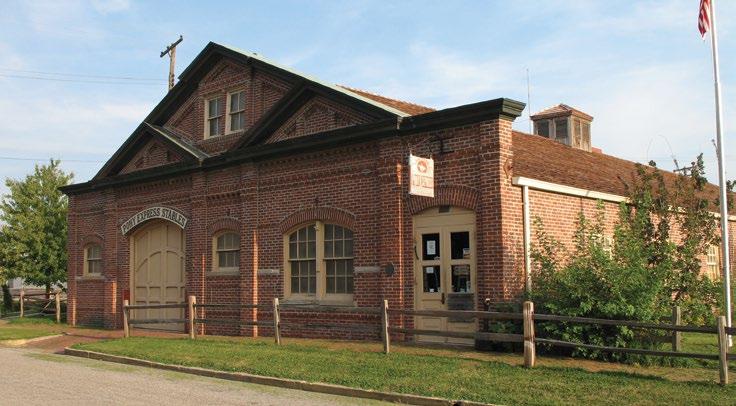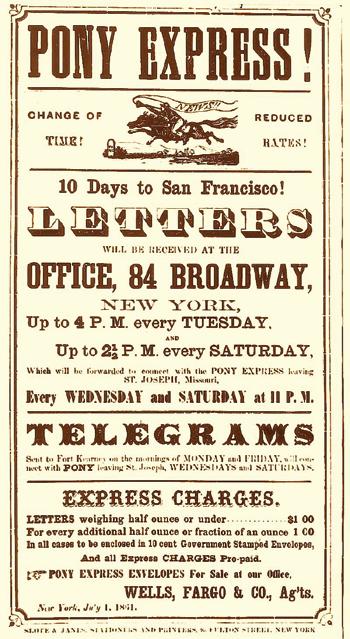
2 minute read
The Pony Express
An 18-Month Operation That Created a Lasting Legacy
By Tom Surface
In existence for only 18 months between April 1860 and October 1861, the Pony Express left a lasting legacy in the lore of the Old American West. In the era before electronic communication, the Pony Express was the thread that tied the eastern U.S. to the west.
Running from St. Joseph, Missouri, to Sacramento, California, a distance of more than 1,800 miles, the Pony Express delivered letters in just 10 days -- a speed unmatched in that period of American history.
The need of a fast and reliable communications service developed as a result of the California 1849 Gold Rush, the 1847 Mormon exodus to Utah, and the thousands who moved west on the Oregon Trail. As early as the 1840s, the need for a faster mail service beyond the Rocky Mountains became clear. Initially, this need was partially filled by outfits such as the Butterfield Overland Mail Service starting in 1857 and private carriers in following years. However, in 1858 a greater need for transcontinental mail service arose when U.S. Postmaster General Joseph Holt scaled back overland mail service to California and the central region of the country. This led to the creation of the Leavenworth & Pike’s Peak Express Company by William H. Russell, Alexander

Pony Express Stables at Fort Bridger, Wyoming
Majors and William B. Waddell, later known as the Pony Express. The route had about 190 stations, with each rider riding around 75 to 100 miles, while changing horses every 10 to 15 miles. According to historical reports, the service was remarkably efficient: during its 18-month of operation, only one bag of mail was reported lost.
On June 16, 1860, about ten weeks after the Pony Express began operations, Congress authorized the a bill instructing the Secretary of the Treasury to subsidize the building of a transcontinental telegraph line to connect the Missouri River and the Pacific Coast. The passage of the bill resulted in the incorporation of the Overland Telegraph Company of California and the Pacific Telegraph Company of Nebraska. While the lines were under construction, the Pony Express continued to deliver the mail. Letters and newspapers were carried the entire length of the line from St. Joseph to Sacramento.

Original Pony Express Poster
Then, on October 26, 1861, the telegraph line put San Francisco in direct contact with New York City. Two days later the Pony Express was officially terminated, but it was not until that November when the last letters completed their journey over the route, that service ceased.
Most of the original trail has been obliterated either by time or human activities. Along many segments, the trail’s actual route and exact length are matters of conjecture. In the western states, the majority of the trail has been converted, over the years, to double track dirt roads. Short pristine segments, believed to be traces of the original trail, can be seen only in Utah and California. However, approximately 120 historic sites may eventually be available to the public, including 50 existing Pony Express stations or station ruins. Developed from multiple sources.



